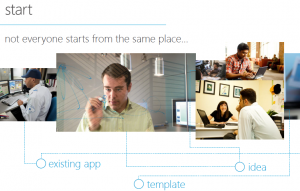Microsoft's cloud roadmap for 2012: What's on tap

Microsoft hasn't been willing to share publicly its roadmaps for its Windows Azure and Office 365 cloud offerings for the past year-plus. But it seems the Softies have been sharing some details privately with a select few.

Microsoft is using "Start, Build, Manage" as the way the company is describing for customers and partners its path to the cloud. The emphasis going into 2012 seems to be on convincing users that they don't have to create Azure cloud apps from scratch (which has been Microsoft's message up to this point). Instead, Microsoft is making it so users can more easily bring existing apps to the cloud and/or bridge their on-premises apps with Azure apps.
Here are a few of the deliverables on the roadmap that will help enable these scenarios:
- Consistent REST APIs for Windows Azure features and services, callable from any programming language (full SDK in Spring)
- SQL Azure Reporting Services (now a Q1 2012, rather than an end-of 2011 deliverable, I am hearing from one of my contacts)
- Ability to create a virtual private network (VPN) between on-premise servers and Windows Azure. (Note: I believe this is the Azure Connect offering, originally codenamed Project Sydney, which was supposed to be out before the end of 2011 in final form.)
- Ability to import and export large amounts of data by shipping files on a drive into Windows Azure blob storage
- Same availability promise (99.9%) for single and multiple instances
- Ability to mount/unmount more easily drives on running instances
- Support for more easily developing Azure apps not just on Windows, but also on Macs and Linux systems
- Support for the User Datagram Protocol (UDP) for streaming workloads and other application areas
- The ability to easily set up Wordpress and Drupal on Azure "without writing code"
- A preview of functionality allowing the creation, customization and management of private marketplaces (Note: I believe this is the codename "Roswell" technology about which I blogged late last year)
- Better Active Directory integration for migration: Both the ability to sign on using an on-premise Active Directory in Office 365, as well as technology that will help users migrate their line-of-business apps that are dependent on Active Directory to the cloud (supposedly "without making any changes")
- Support for more easily uploading and sharing videos in a central depository across an enterprise, as well as the ability to easily stream to any device (including those running not just Silverlight, but also Flash, HTML5, iOS and Android)
I see the hand of Azure Application Corporate Vice President Scott Guthrie in some of these coming features, as well as on some of the clean-up work around tooling that's happened lately around Windows Azure.
What's still missing, potential and current Azure customers, from Microsoft's cloud platform if the Redmondians end up making good on all these roadmap commitments?